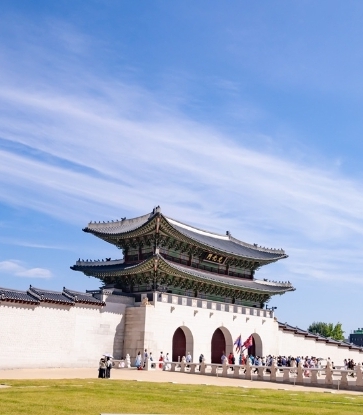And why not? Soup, by its very definition, is comforting, nourishing and a satisfying meal unto itself. For Korean cuisine though, that notion is taken up a few notches as there's a soup for every celebratory occasion. For birthdays, miyeok-guk or seaweed soup is served. For Chuseok (Mid-Autumn Festival), taro soup is savoured and at weddings, janchi-guksu, or wheat noodle soup in dried anchovy broth as well as beef rib soup is customary.
If you're visiting Korea, be prepared to discover a mind-blowing variety randing from meat-based, fish, vegetables and even ice-cold soups. Expect to be served complimentary bowls of soup at restaurants with that spicy stir-fried pork or that grilled fish meal you order. It is not uncommon to find self-serve stations at Korean restaurants that offer complimentary soup along with banchan.
Soups in Korea can be largely categorised into four: guk, tang, jjigae and jeongol. These are based on the different methods in which they are prepared, how they are served and eaten at the table. Here's more.

The native Korean word for soup. Guk is not shared; it is served in individual portions alongside a bowl of rice at every meal. Guk is a thin soup that has a liquid to solid ingredient ratio of around 7:3. Its key component is the liquid. Once served, no additional seasoning or condiment is added.

Thicker and saltier than soup, jjigae contains more solid ingredients than guk. The ratio of liquid to solid ingredients is around 4:6. Unlike guk, the key component of jjigae is the solid ingredients such as vegetables, tofu, fish or meat.
It is common practice for families to share a pot of jjigae. At restaurants, diners can order individual portions of jjigae to be eaten alone. A complimentary pot of jjigae is often served at barbecue restaurants with each order of rice.
SEE ALSO: 24 Restaurants Bag Michelin Stars in Seoul’s First Michelin Guide

Tang is derived from hanja or Chinese characters and is the formal term for guk. Tang usually requires a longer cooking time than guk. Certain types of tang, including maeun-tang(spicy fish hot pot), are a communal fare, shared among at least two people. Other types such as galbi-tang(beef rib soup) and seolleong-tang(beef bone soup) are served in individual portions. Generally, the key component of tang is the broth.
Another element that sets guk and tang apart is whether additional seasoning or condiments are added after they have been served. Salt, fresh green onions and hot chili paste may be added to tang according to personal preference but rarely to guk.

Jeongol is a communal hot pot dish that usually constitutes the main part of a meal. What sets jeongol apart from its cousins is that prepared broth is poured over the raw ingredients–meat, offal, vegetables or fish–laid out in a shallow pot and cooked at the table. Additional broth is continually added to the boiling pot of stew throughout the meal. Jeongol is similar to jjigae in that it is less soupy than guk, but the soup itself is less salty than jjigae.
This article first appeared on guide.michelin.co.kr and was written by Yerica Park.






















